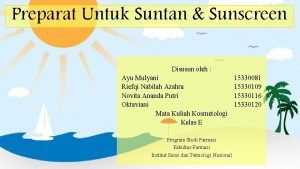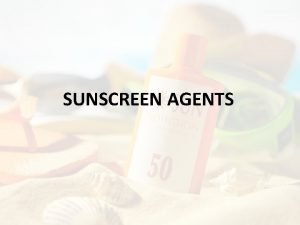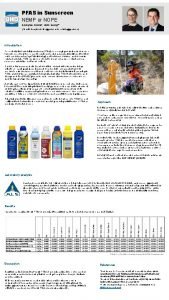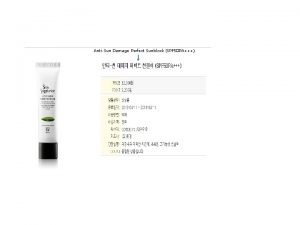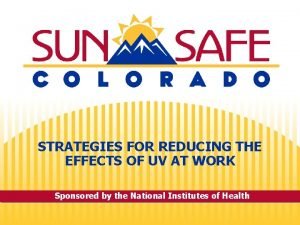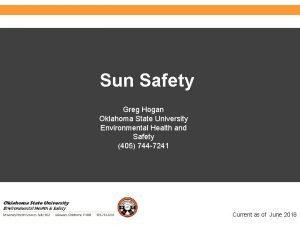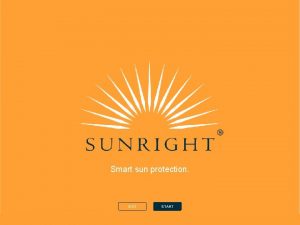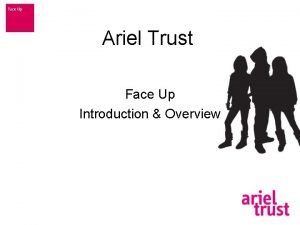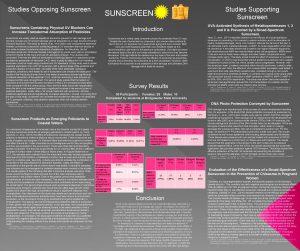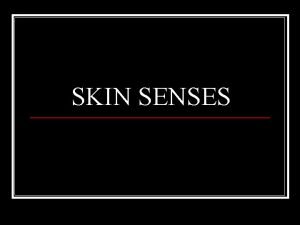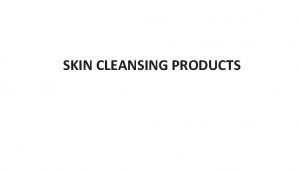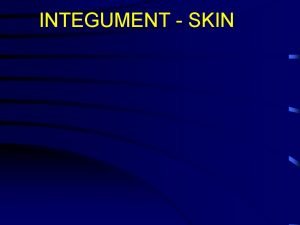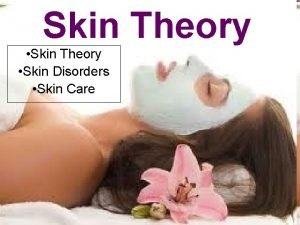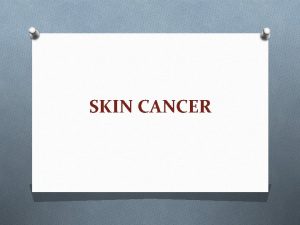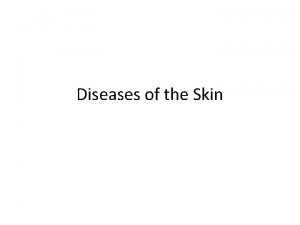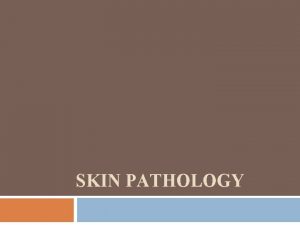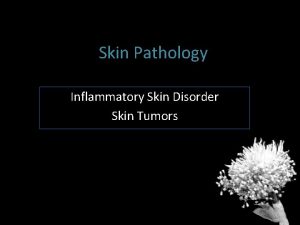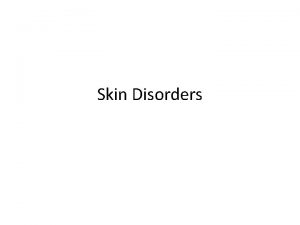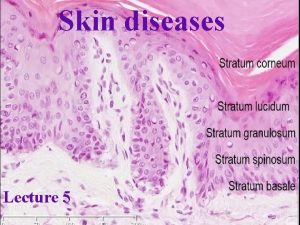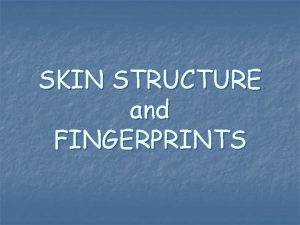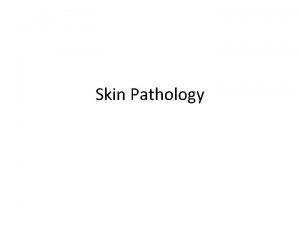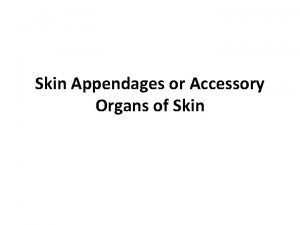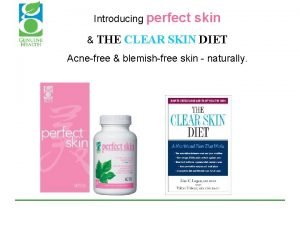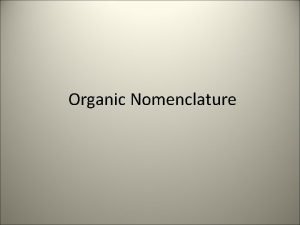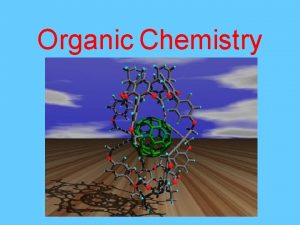Skin Elements Sunscreen Introducing Skin Elements Organic Sunscreen























- Slides: 23

Skin Elements Sunscreen

Introducing: Skin Elements Organic Sunscreen

The world’s most advanced natural sunscreens! • SPF 30+ protection with 3 hours water resistance - ideal for active sports • Broad spectrum UV-A and UV-B • Non-whitening, patented micronised zinc technology • Low-irritation formula • Can be used by the whole family Innovatively formulated using only organic or naturally sourced ingredients. Formulated according to Naturopathic principles for health and well-being. 100% natural, with organic ingredients!

Completely free from • chemical UV-absorbers • chemical preservatives • titanium dioxide • parabens Cosmetically appealing products, bursting with organic botanical extracts, antioxidants, vitamins and minerals to protect and nourish the skin.

Benefits • Very high protection sunscreen that will also moisturise • Protects from UV-B rays, which cause sunburn, as well as UV-A rays, which cause premature aging of the skin. • Very water resistant (3 hours) even with long periods swimming or sweating, which can mean longer time between reapplying • Won’t sting the eyes - great for sports people • Ideal for the whole family, including those with young and / or sensitive skin. • A healthy alternative to avoid excess chemicals

Complete Ingredients List Grapeseed oil, Green tea extract, Macadamia oil, Roman Chamomile extract, Sunflower oil, Capric/caprylic triglycerides (plant oil derived), Avocado oil, Beeswax, Theobroma (Capuassu) butter, Candellila wax, Lecithin, Vegetable oils, Cucumber extract, Tocopheryl acetate (Natural Vitamin E). Active Ingredient: Zinc oxide 22. 3%

Awards this year #1 sunscreen by EWG (Environmental Working Group) out of 1600+ brands # 1 eco sunscreen by Elle Magazine #1 sunscreen by Sprig. com (division of the Washington Post)

International Product Approvals TGA - Australia, NZ FDA – US Health Canada – Canada Ministry of Health - Japan

Sponsorship/Endorsement Claire Bevilacqua

Sponsorship/Endorsement Simon Wichtermann

Sponsorship/Endorsement Tom Innes

Technical Appendix

Concerns about Chemical UV-absorbers. . . Recent medical research has raised some serious concerns about the chemical UVabsorbers and titanium dioxide that are currently used in sunscreens. . .

Medical Research on Chemical UV-absorbers Octyl-methoxycinnamate (used in 80 -90% of sunscreens) – produces free radicals (singlet molecular oxygen) known to be toxic to cells Chem Res Toxicol 1996 Apr-May; 9(3): 605 -9 - detectable in blood and urine after application to skin J Eur Acad Dermatol Venereol, 2008 Apr; 22(4): 456 -61 - when tested on mice cells, approx. half died, using a lower concentration than in most sunscreens New Scientist, vol 168 issue 2259, 2000, October 7; 5, 13 Radiation Protection Dosimetry (vol 9; 283) - showed estrogenic effects in lab tests making cancer cells grow more rapidly and triggered developmental abnormalities New Scientist, vol 170 issue 2287, 2001 Apr 21; 5

· Octyl-methoxycinnamate – products containing this chemical were recommended to be removed from shelves by the Danish EPA in April, 2001 (later limited to 4 -MBC) Article “Gender-bending chemicals in sun lotions for children” - binds to DNA in lab tests Johannes Norrell, Shikhar Vohra, T. M. Nordlund (Dept. of Physics, Univ. of Alabama at Birmingham)

· Benzophenone-3 / Oxybenzone – is rapidly oxidised in the presence of light and inactivates important antioxidant systems in the skin (the skin’s natural protection system) J Invest Dermatol, 1996 Mar 106(3): 583 -6 - can be measured in urine after topical application in sunscreen (recommended not to be applied to large surface areas for extrended and repeated periods of time…) The Lancet, Volume 350, Number 9081, 20 September 1997 - “one of the most powerful free radical generators known to man… The free radicals then initiate chain reactions which can increase skin damage and an increase in skin cancers” Article “Do chemical sunscreens increase cancer and DNA damage? ” - Dr. Loren Pickart - 76 -80 mg per hour absorbed of chemical through skin surface Pharmaceutical Research, Vol. 12, No. 9, 1995 - found 96. 8% of people contaminated with this chemical US Center for Disease Control and Prevention

Oxybenzone (benzophenone-3) recovered in urine as unchanged oxybenzone and metabolites after topical application of commercially available SPF 15+ sunscreen to nine human volunteers The Lancet, Volume 350, Number 9081, 20 September 1997 “There may be additional concern for young children who have less well-developed processes of elimination, and have a larger surface area per body weight than adults, with respect to systemic availability of a topically applied dose. ”

· Titanium dioxide – causes DNA damage (the cells genetic material) due to superoxide radicals, active oxygen radicals and hydroxyl radicals produced when exposed to light Mutat Res 2000 Mar 3; 466(1): 1 -7 Free Radic Biol Med 1999 Aug; 27 (3 -4); 294 -300 FEBS Lett 1997 Nov 24; 418(1 -2): 87 -90 J Photochem Photo. Biol B 2005 May 13; 79(2): 121 -45 Redox Rep. 2001; 6(5): 319 -25 enhances herbicide absorption through the skin after commercial sunscreen applied (Titanium and OMC) Food Chem Toxicol 2007 Jan; 45(1)93 -7 - · PABA (p-aminobenzoic acid) – produces free radicals in the presence of light Chem Res Toxicol 1996 Apr-May; 9(3): 605 -9 · Cinoxate – causes DNA damage (sister chromatid exchanges) Mutat Res 1989 Jun 21; 2(2): 213 -21

· Padimate-O – produces free radicals in presence of light (singlet molecular oxygen) and substantially increases indirect damage (strand breaks in DNA) when in contact with cells Chem Res Toxicol 1996 Apr-May; 9(3): 605 -9 Mutat Res 1999 Jul 21; 444(1): 49 -60 - mutagenic in sunlight “attacking DNA directly” FEBS Lett 1993, Jun 21; 324 (3): 309 -13 · Methyl sinapate – causes DNA damage (chromosome aberrations and sister chromatid exchanges) Mutat Res 1989 Jun; 212(2): 213 -21

· Dibenzoylmethane and Parsol 1789 – produces free radicals responsible for direct DNA damage (strand breaks) Free Rad Biol Med 1999 Apr; 26(7 -8): 809 -16 · Phenylbenzimidazole sulphonic acid and 2 -phenylbenzimidazole – acts as photosensitisers of DNA damage when exposed to sunlight or UV- B radiation Chem Res Toxichol 1999 Jan; 12(1): 38 -45 · - exposure with light causes cellular DNA damage Int J Environ Res Public Health 2007 Jun; 4(2)126 -31 · 4 -methyl-benzylidene-camphor (4 -MBC) - showed estrogenic effects in lab tests making cancer cells grow more rapidly and triggered developmental abnormalities New Scientist, vol 170 issue 2287, 2001 Apr 21; 5

4 -methyl-benzylidene-camphor (4 -MBC) - products containing this chemical were recommended to be removed from shelves by the Danish EPA in April, 2001 - classed as Persistent, Toxic and Bioaccummulating by EPA - this chemical and other sunscreen chemicals found in breast milk at similar levels as other known environmental contaminants · Article “Gender-bending chemicals in sun lotions for children” - detectable in blood and urine after application to skin J Eur Acad Dermatol Venereol, 2008 Apr; 22(4): 456 -61 - Endocrine active chemical with developmental toxicity (affecting pregnancy & puberty as well as thyroid, prostate, uterus, brain tissues) Toxicology 2004 Dec 1; 205(1 -2): 113 -22

Conclusion The product we have developed is the only completely natural and organic sunscreen in the world which utilizes micronised zinc oxide exclusively and that offers a 3 hour water resistance. The product we are offering allows your stores to capture a fast growing market niche with a product that is an essential daily consumer product! Ensure your group is set to profit from this outstanding product for this summer by placing your orders now…

Contact Information Skin Elements Pty Ltd 7/36 Ord Street West Perth, Western Australia, 6005 Ph: +(61) 8 9486 4792 Fax: +(61) 8 9486 4793 Email: info@SEnatural. com
 Sunscreen
Sunscreen Suntan artinya
Suntan artinya Classification of sunscreen
Classification of sunscreen Assure natural day cream benefits
Assure natural day cream benefits Pfas free sunscreen
Pfas free sunscreen Sasa sunscreen
Sasa sunscreen Sunscreen two finger rule
Sunscreen two finger rule Abcde rule
Abcde rule Start sun protection
Start sun protection Thin skin vs thick skin
Thin skin vs thick skin Chapter 23 facials milady
Chapter 23 facials milady Stratum granulosum
Stratum granulosum Embedded quotes mla examples
Embedded quotes mla examples Talk boost tracker
Talk boost tracker Adobe illustrator cs
Adobe illustrator cs Introducing flex pods
Introducing flex pods A blood relationship
A blood relationship Introducing the metric system
Introducing the metric system Introduction about kfc
Introduction about kfc Quote explanation starters
Quote explanation starters Ariel trust
Ariel trust Templates for introducing quotations
Templates for introducing quotations Self introduction
Self introduction 1941-1882
1941-1882

